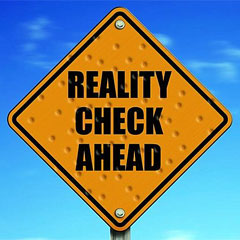by Rivi Aspler
 Devout Agile evangelists will define a user story as a short, simple description of a feature told from the perspective of the person who desires the new capability. The user story will typically follow a simple template: As a <type of user>, I want <some goal> so that <some reason>.
Devout Agile evangelists will define a user story as a short, simple description of a feature told from the perspective of the person who desires the new capability. The user story will typically follow a simple template: As a <type of user>, I want <some goal> so that <some reason>.
And furthermore, while a product backlog can be thought of as a replacement for the requirements document of a traditional project, it is important to remember that the written part of a user story (“As a user, I want…”) is incomplete until the discussions about that story occur and the discussions are those that actually enrich the user stories with enough details that R&D teams can chew on.
So much for theory and now for practice….
I have found that the concise user stories are simply not enough. It is especially apparent when one or more of the following occurs:
Since all of the above is my day-to-day reality, at my company, we are using the following guidelines for a user story template.
- We are using a table format.
- The left column of the table is dedicated to the ‘meta-data’ of the various definitions.
- Each user story has the same ‘meta-data’ topics listed down so that the PO and the developers can easily understand each-other.
- The user story defines a very granular scenario.
- The other user stories that complete the ‘Place an Order’ Theme are detailed in other user stories (i.e. the references to US19, US38 and US39)
- A UI design is attached since one picture is always better than a thousand words…
[table id=4 /]
To conclude, the above detailed template may not stick to pure Agile recommendations, but it does represent a win-win best practices for the type of definitions that developers practically need in order to get your story coded.
Rivi
Tweet this: User Stories that Developer can Actually Work With http://wp.me/pXBON-3ls #prodmgmt #agile
